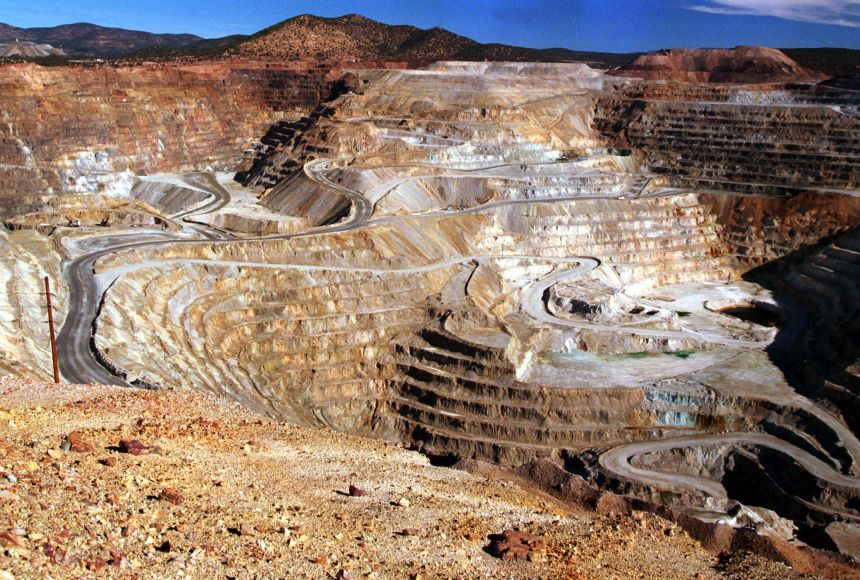A Whisper’ Welcome To Our World Of Atmosphere, Agricultural And Aquatic Innovation And Sustainability.

After recognising different challenges constraining the growth and development of commercial and emerging farmers in the country, the recommendation of the adoption of a “Theory of Change” to train farmers and grow the agricultural sector in an inclusive manner.
The theory advocates for a co-existence of commercial and emerging farmers to promote the agricultural and food sectors on a new growth trajectory that can ultimately contribute to taking South Africa’s economy out of the “Middle Income” trap.
Methods of extracting stone and other materials from quarries have changed since the first quarries were mined in the Aswan area of Egypt. The earliest quarries were mined with hammers, picks, and chisels made of stone or metals such as bronze and iron.
Even communities that did not have stone buildings created quarries. The Lakota culture of the Midwest region of the U.S. and Canada did not quarry stone to build monuments or houses. At a site in Pipestone National Monument, in the U.S. state of Minnesota, they quarried for stones to make calumets, or ceremonial smoking pipes. Calumets, made of a type of metamorphic rock called catlinite or pipestone, were important for creating lasting treaties, or agreements between groups of people.

Quarrying material for use in building materials was much more work. Stones had to be carried or dragged out of quarries manually. Stones could also be hauled with pulley systems involving ropes and moveable wooden tracks or sleds. This process often involved thousands of slaves and other workers.
On Easter Island, for example, almost the entire community had to be involved in the quarrying, carving, and transportation of statues. The rock for these statues, called moai, was hauled all over the island from one quarry. The heaviest moai weighs 86 tons. Scientists are still studying how these ancient Polynesian people transported their quarried rock.
Today, people use mechanical tools to mine quarries, including drilling equipment, blasting equipment, and hauling equipment. Industrial drills with diamond tips are used to cut into hard rock. Some miners use explosives to blast away unwanted material to access the desired rock. Finally, materials are hauled away by enormous mining trucks. Some mining trucks can carry more than 350 tons of material.
The marine industry is taking significant steps to reduce its carbon footprint and minimize its impact on the environment. Boat builders and naval architects are now considering the entire lifecycle of their vessels, from the materials used to their end-of-life disposal process. This trend towards eco-conscious practices is particularly noticeable in the yachting industry, where boat builders are launching vessels with a focus on sustainability.

Sustainable materials, such as recycled plastic, bamboo, or sustainably sourced wood, are being used in the design and construction of boats to reduce environmental impact. These materials are not only eco-friendly but also demonstrate a commitment to sustainable practices. The use of sustainable materials is also becoming increasingly important in the marine industry as the world faces the consequences of climate change.
Back in 1783 in Paris, the first untethered, manned hot air balloon flight was performed by Jean-François Pilâtre de Rozier and François Laurent d’Arlandes. The hot air balloon they used was created by the Montgolfier brothers.

A hot air balloon is lighter-than-air, and consists of a bag (known as an envelope) containing heated air. A wicked basket or ‘gondola’ is suspended beneath it, which carries both the passengers and the source of heat. This is usually an opened flame made by burning liquid propane. Because the hot air inside the balloon has a lower density than the colder outside air, it becomes buoyant and able to fly. Modern hot air balloons are now made in a variety of shapes such as rockets, bees and more.
Is your humanity in awakening now? Engage the whisper by consultation via email at atmosagriaqua@lehlevocorporate.co.za or via call on +27 (0) 82 284 4051
“The Whisper Of Our Humanity Finds No Greater Occupancy’ Existence Other Than In Our Earth, Air And Waters – This Is Our Engaged Expression”

Hleketani Ephron Mukhari
Chief Executive Director (CED), Lehlevo Corporate
